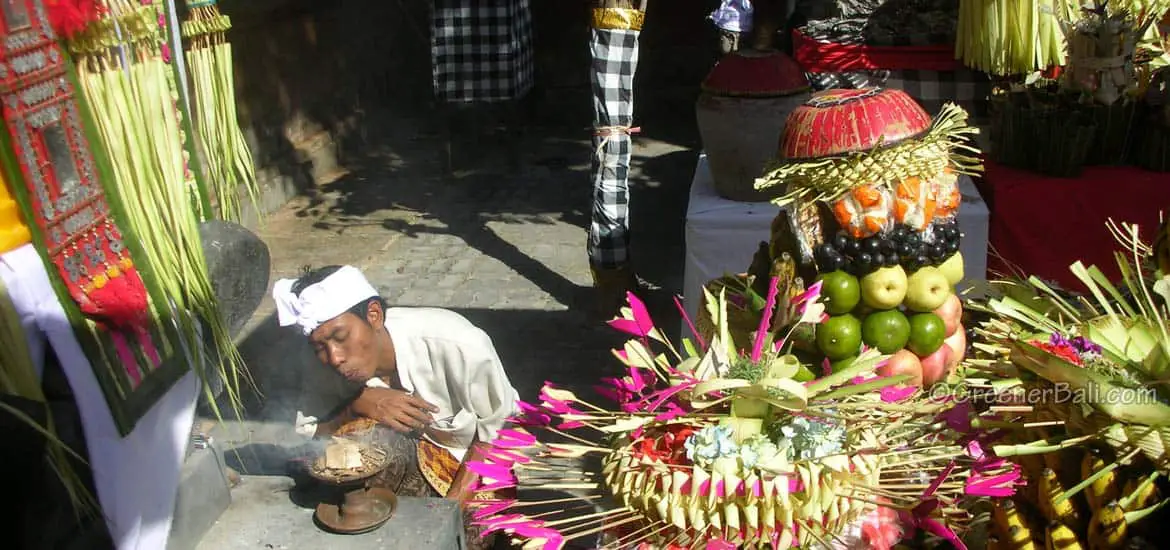Characteristics of the Bali religion are found all over the island. The best way to see it is to drive around the island. Before you know it you’ll see Balinese people making offerings in front of their shops, on crossroads, on cars, inside the many temples and even on the beach.
The funny thing is that we love to hang out at the beaches and take a dip in the sea. ending with a stunning sunset. However, for the Balinese, this is out of the question.
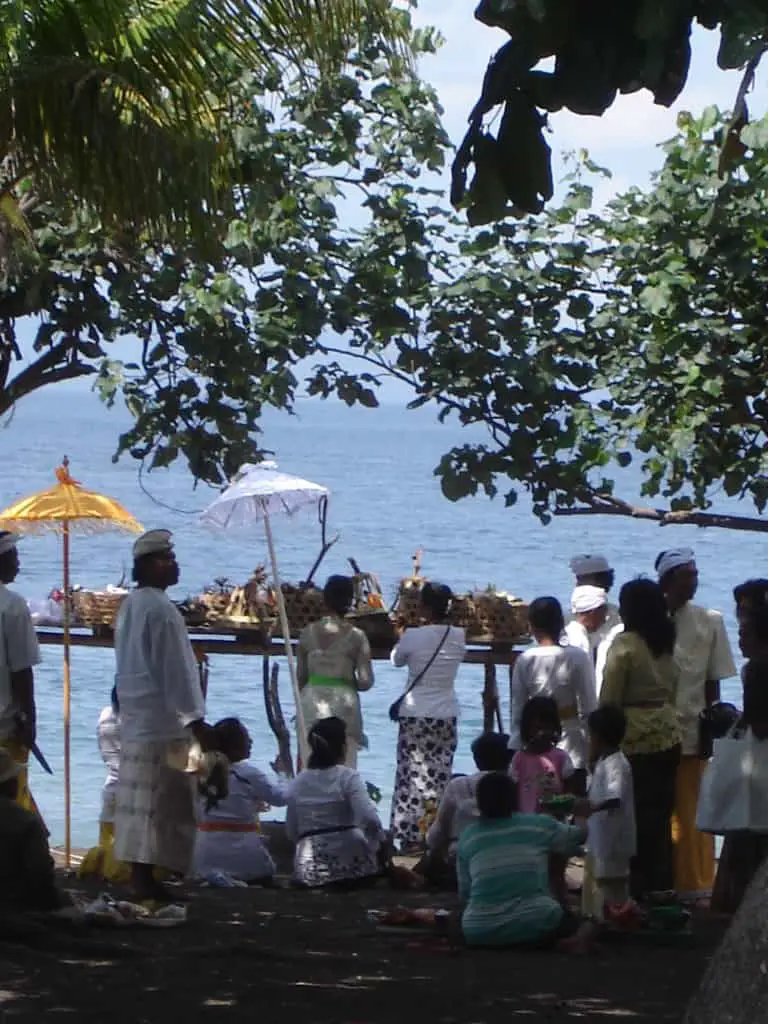
The sea is the place where demons and bad spirits live and can’t be trusted. You won’t find much Balinese living right on the beach. If they do they are often the descendants from other islands who have settled in Bali.
The mountains and volcanoes on Bali is the place where the gods, nature spirits and ancestral spirits are housed. Mount Agung is one of the most important.
In between the mountains and the sea, there is the human world where good and bad spirits fight until eternity.
Village layout
Every village is built on the line between the mountains and sea, sunrise and sunset. Even the main street goes from the mountain-side towards the sea-side.
You find the Temple of Origin (pura puseh) located at the mountainside of the village. This temple is dedicated to Brahma, the creator.
In the center of the village, there’s the Temple of the People (pura desa). At this temple, villagers come together to organize their affairs. At the edge of the village, you can find the Temple of Death (pura dalem). This is where the Goddess of Death is worshipped.
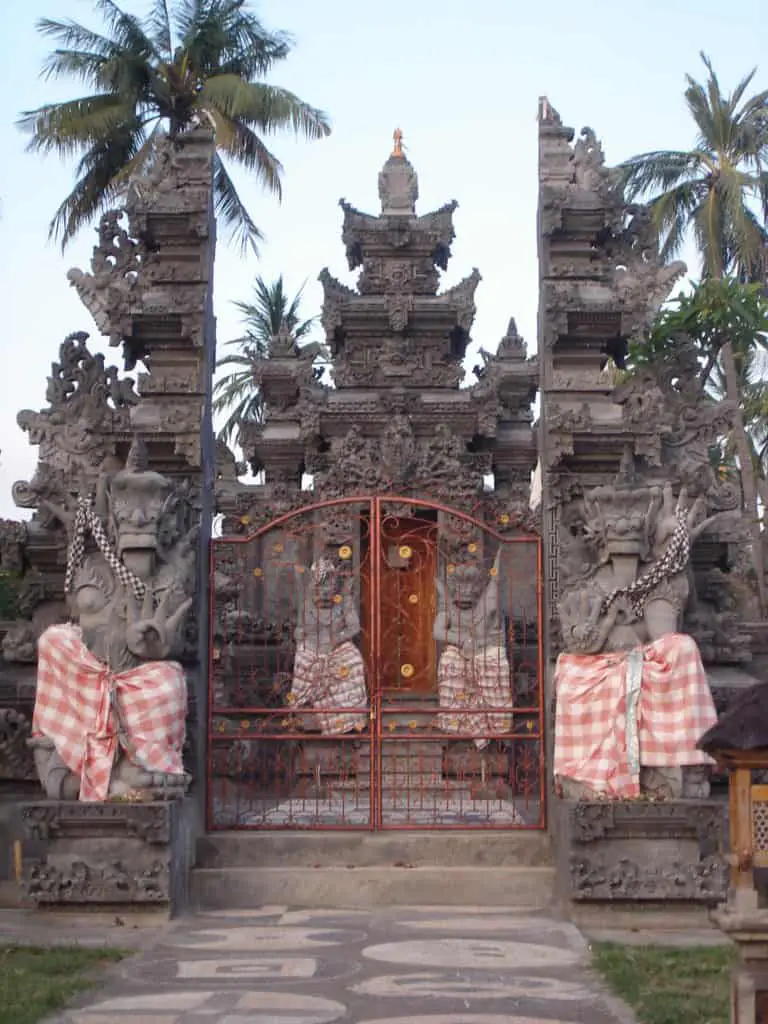
You won’t have to stop at every temple as there are thousands of them. One is even bigger and plays a more important part than the other.
From head to toe
The distance between the mountains and the sea also counts for people. Their heads are the most important part of the body because it is the part that’s closest to the gods. It is therefore inappropriate to touch the heads of little children.
The feet are closest to the underworld and that’s the reason why babies are not allowed to touch the earth for their first 210 days (1-year in the Balinese wuku-calendar) after they are born.
Balinese Courtyard
A Balinese courtyard or compound is typically accessible by steps and a small wooden door followed by a wall. The wall is called aling-aling. Its goal is to stop the demons from entering.
The demons can only move in straight lines. Hence they will then bump into the wall and head back not to return for a very long time.
The word demon might not be the most appropriate description though. They are seen more as ‘low spirits’ since they are also able to perform good deeds and provide protection. The low spirits have to be appeased because they are thought to be trouble makers.
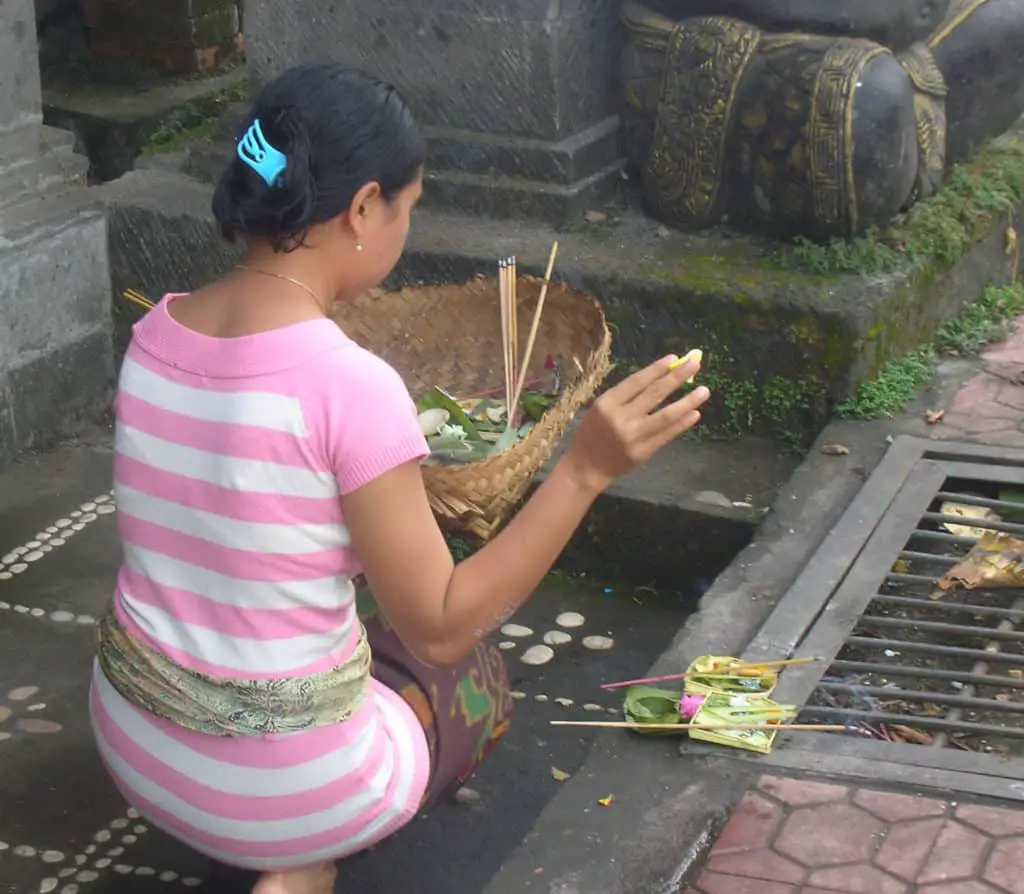
The Balinese believe that everything has a soul, even a river or a tree and that the forces of nature are something you hardly have any control over.
That’s why in the Bali religion the people worship their ancestors too. The ancestors have the power to direct the forces of nature.
Every Balinese courtyard has several pavilions and a family temple. In which direction?
You guessed it…
From the mountains towards the sea-side. You’ll find it in a corner nearest to the mountains where the gods and ancestors are worshipped.
Hindu Dharma
The Balinese mix the Hindu religion with animistic spirits, gods, ancestral spirits and Buddhist characteristics. This makes Bali what it is today. Their religion is a world apart from the Hindu religion in India where it originated.
Centuries ago Indian traders brought with them their Hindu religion to Indonesia. For centuries Indonesians believed in the Hindu Gods together with their animistic spirits. Especially when the Majapahit Kingdom on Java spread to the rest of Indonesia and more people came into contact with this religion.
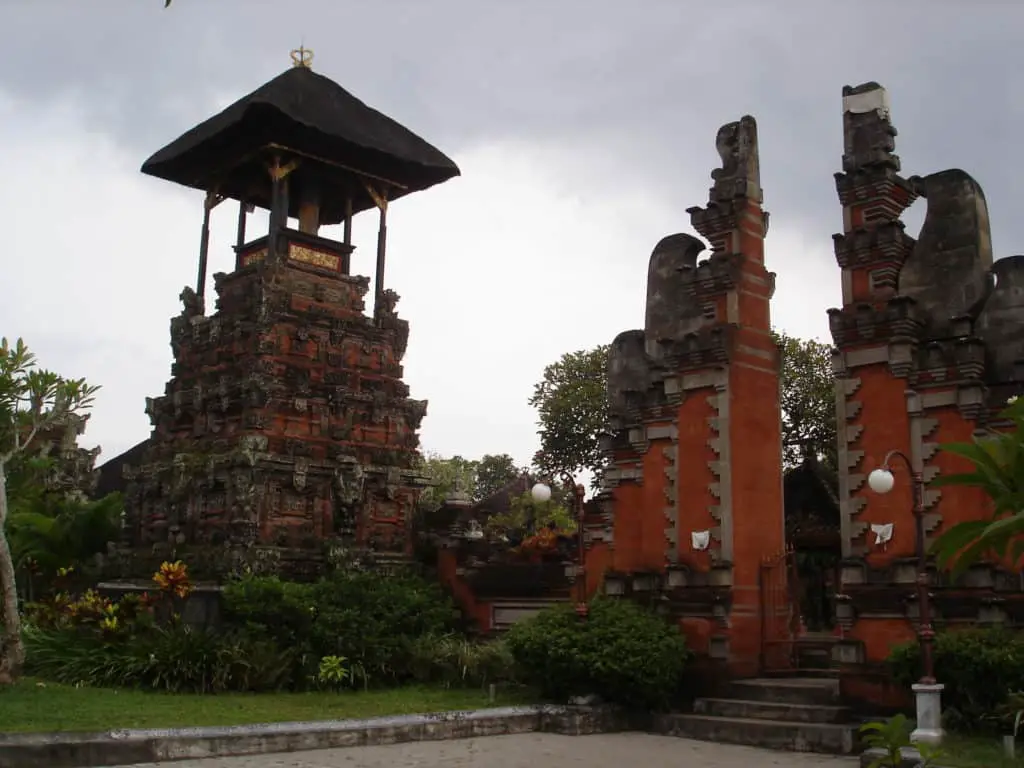
Then Middle-Eastern traders brought the Islam religion to Indonesia. The Majapahit Kingdom collapsed with priests, artists, noblemen fleeing to Bali. This was the only place left where they could worship their gods and develop the Bali religion, the way you can still see it today.
The Balinese people believe in an organized universe where the power of dharma keeps it all together. There is a constant fight between the dharma and the adharma.
This struggle causes birth, to be human and to die. The God who creates order in the fight is called Sanghyang Widhi Wasa and possesses all powers.
The gods
The Sanghyang Widhi Wasa is portrayed in the Hindu gods Brahma (the creator), Vishnu (the protector) and Shiva (the destroyer).
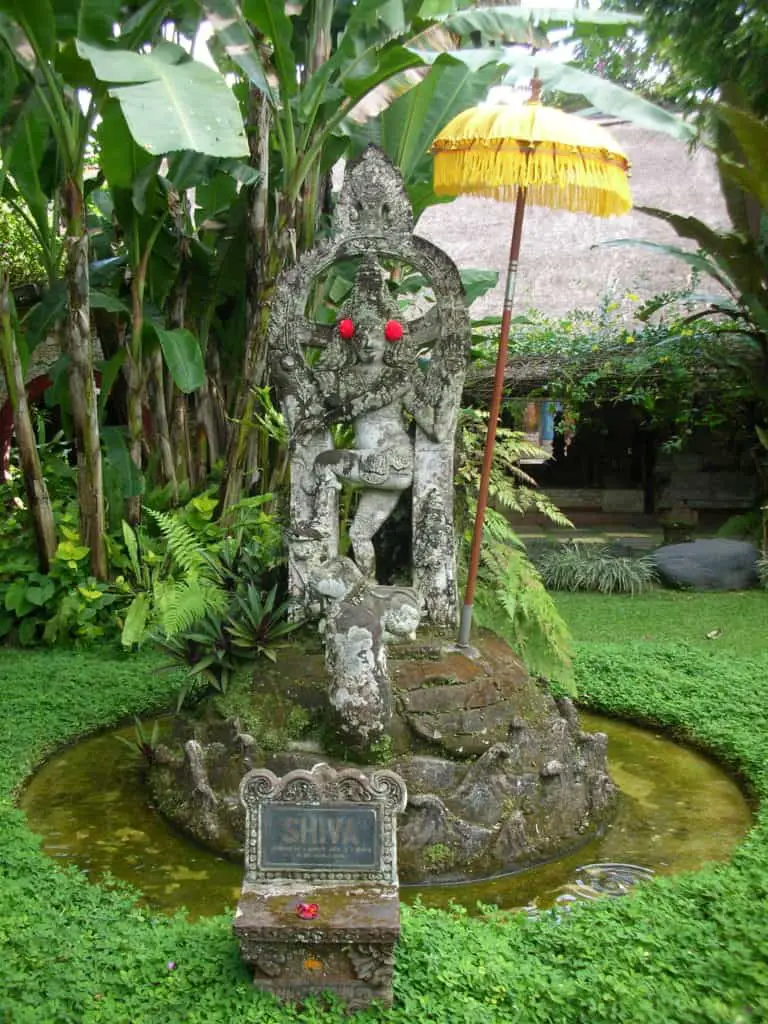
The destroyer isn’t seen by the Balinese as something negative but more like a condition for reincarnation.
For the Balinese Shiva appears as the God of the Sun, Surya, or the mighty god of the Mount Agung, Mahadewa. In the Hindu religion, it is normal that the three gods are able to appear in several reincarnations of different gods.
The Ramayana and Mahabharata Hindu stories are very popular in Bali. The Balinese believe that the hero in the Ramayana story is Rama, the reincarnation of Vishnu, the protector.
Human reincarnation
The Balinese also believe that every human being has an immortal soul called ‘atman’. This soul reincarnates constantly back into the same family with death and rebirth until it is released with the highest god.
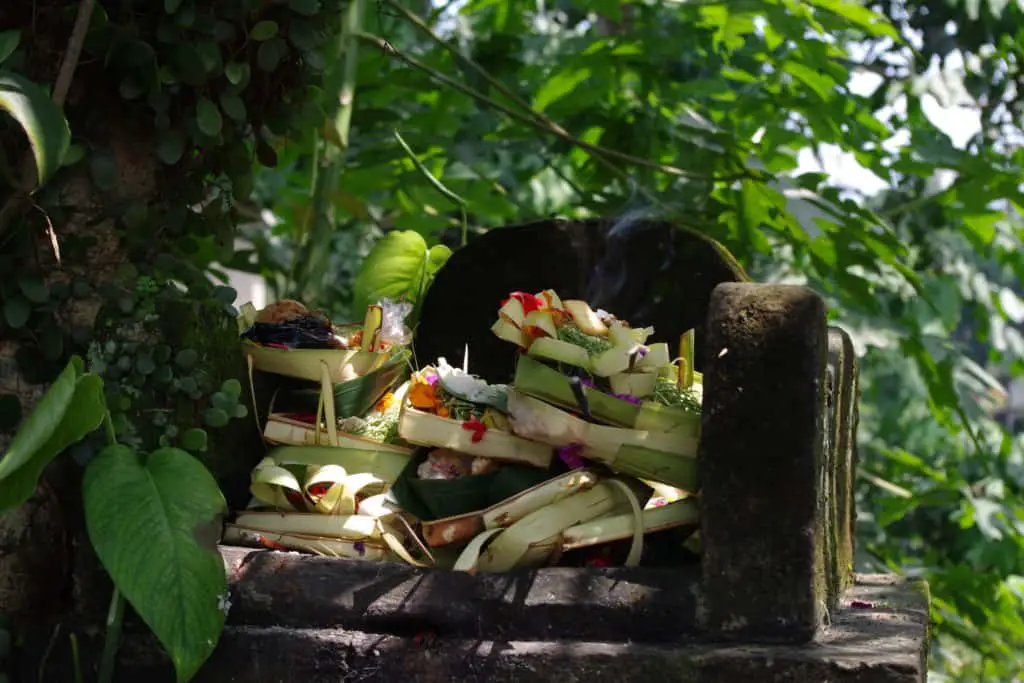
Before the reincarnation process ends the Balinese have three choices in order to release the soul to the highest gods. These three important things in the Bali religion are:
1. concentration and meditation, the most difficult way
2. to learn the old religious books and live by the books and
3. to bring offerings to the gods and perform various rituals. The last way is what most of the Balinese people try to accomplish.
So you can say that the Balinese are Hindu but have other gods and spirits as well.
That’s why you can see the offerings in front of shops, cars, the beach that worship the good ones and gently dismiss the demons from entering the area.
Caste system Dharma
Surprisingly there is a sort of caste system in the Bali religion. However, it is slowly disappearing, especially in the cities and tourist areas.
It’s not like the caste system in India where you are born into a cast such as the untouchables or pariahs. In Bali is it mainly obvious during ceremonies and the way the Balinese of the different casts talk to each other.
Hence the caste system is not that obvious for a traveler. Only if you know of its existence will you be able to see signs of the caste system in the Balinese daily life.
The most obvious example is women carrying heavy construction loads on their heads, such as buckets of sand or bricks.
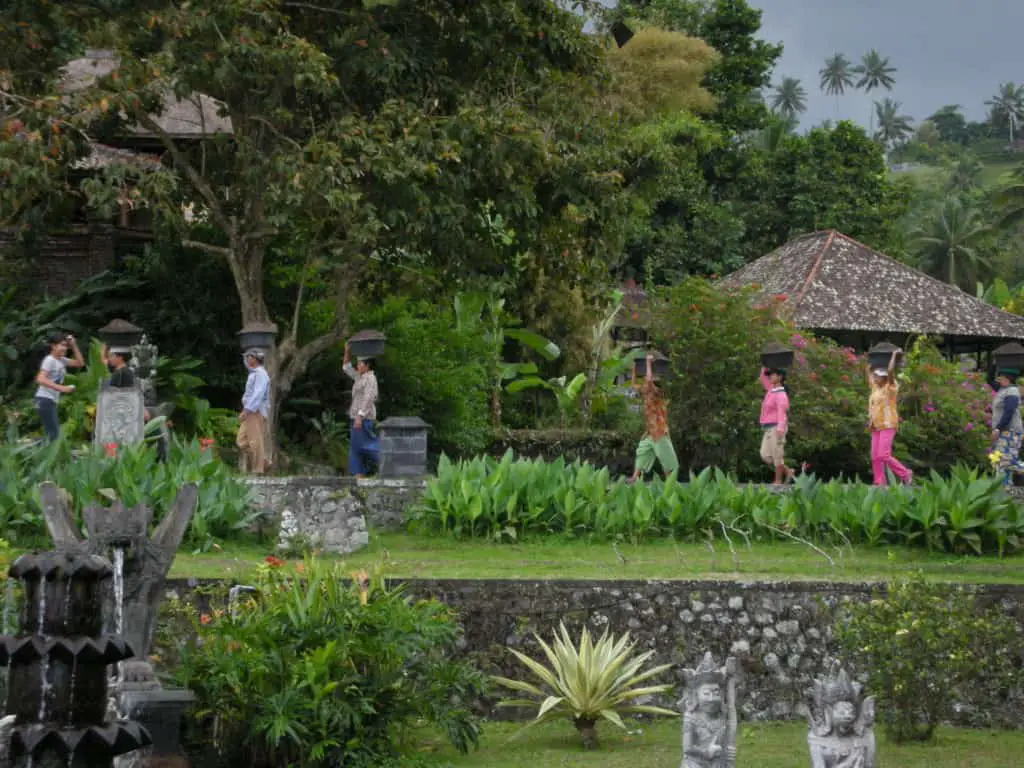
Around 90% of the Balinese belong to the lowest caste, called the Sudra or Jaba. The rest can be divided into three casts called the Triwangsa. These three casts are called the Brahmana, psatria (or satriya) and Wesya cast.
The Brahmana caste is the spiritual highest cast of priests and those who have specific knowledge on rituals and the oldest Hindu books belong to this group. They have the titles of Ida Bagus in front of their names and the women have the title of Ida Ayu or Dayu in front of theirs.
The Ksatria (or satriya) is the political highest cast of the royal families of Gianyar, Tabanan, Badung, Klungkung, and Bangli. You can recognize them by their titles of Dewa, Dewa Agung, Anak Agung, Cokorda and Cokorda Gede.
For the female, it’s Dewa Ayu, Anak Agung Istri or Cokorda Istri, which literally means ‘the wife of Cokorda’.
The Wesya cast is the group of warrior descendants and rich noblemen. They often have the name of I Gusti for men and I Gusti Ayu for women.
Pedanda and Pemangku Priests
The Bali religion has four types of priests: the Pedandu, the Pemangku, the Balian and the Dalang.
1. Pedanda Priests
The Pedanda Priests meditate throughout the day in their house temples. They are seeking a connection with the God of the Sun ‘Surya’ who is the reincarnation of Shiva.
These priests have a thorough understanding of the old religious books and speak the difficult ancient Kawi language, based on Sanskrit and has its origin on the island of Java.
If the Balinese need holy water, the Balinese go to them as they are the ones who only know the methods and what should be said. This is also the way they make a living. You will also see them at important ceremonies and rituals where they are responsible for spiritual affairs.
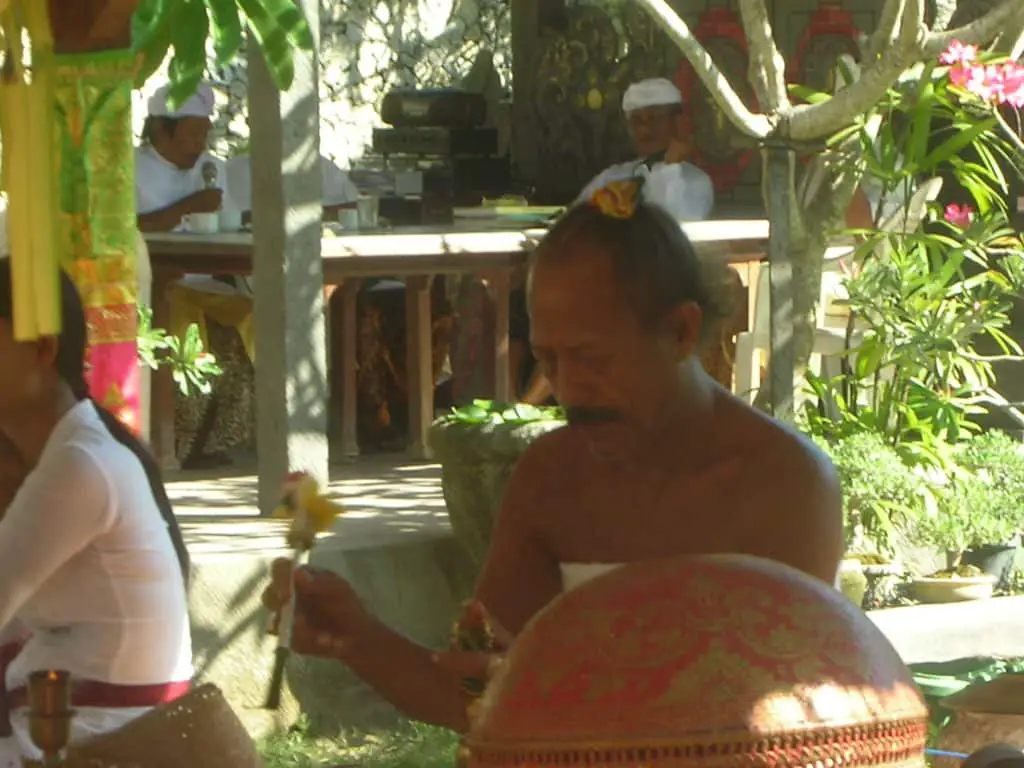
2. Pemangku Priests
The Pemangku Priests are the ones you can find at the temple sites. They take care of the daily temple affairs such as the organization of processions, temple festivities and the reception of offerings.
He often prepares the next phase in a ritual and takes the holy water from the Pedanda priest to sprinkle on those involved in the ritual.
3. Balian Priests
The Balian Priests are the medium for the gods and for the ancestors. They are called into a trance and then the gods speak through them for a variety of reasons such as to discover the cause of illness, who is reincarnated and to find out where the soul is located now.
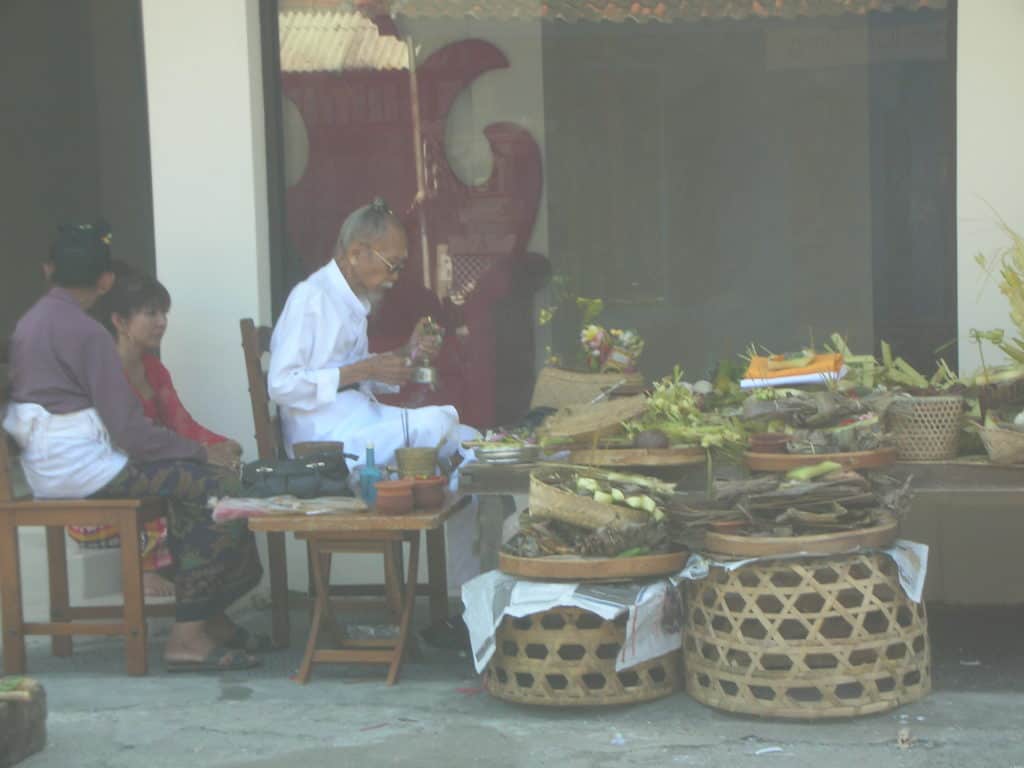
4. Dalang
This priest is the one who can make others laugh …:-). He is the shadow puppet (wayang kulit) master and works between the gods and the normal people.
The Dalang is considered a priest in Bali because he speaks the old Kawi language. He uses this language during his performances and knows the old religious books by heart. The shadow puppet stories always tell religious stories such as the Ramayana and the Mahabharata and are part of ceremonies in the Bali religion.
In Ubud, I went to one of the Wayang Kulit shadow plays. There’s a lot of action going on and I didn’t understand any of it, but it was still entertaining.
Balinese Temples
There are thousands of Balinese temples and just as many shrines on the island. The mother of all temples in Bali is Pura Besakih on the slopes of Mount Agung. It is so important that it’s owned by every Hindu in Bali.
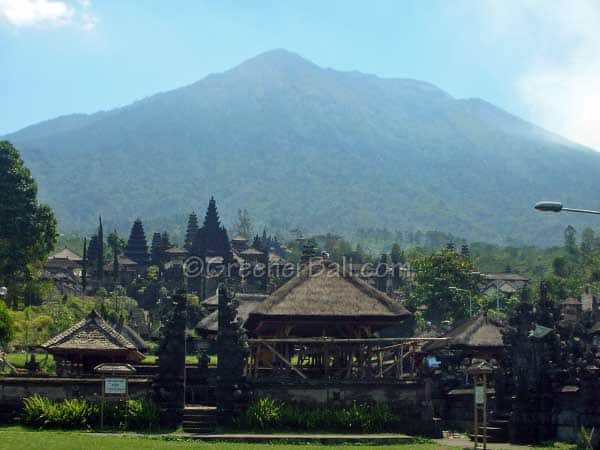
Temple Layout
Balinese temple complexes have an open character and there are no rooms to be found. The temple complexes are built in a straight line from the sea towards the mountains where the gods live.
A temple is divided into two or three rectangular walled courtyards and situated on the same level unless they are built in the mountains where they are built like the rice terraces just above each other.
You enter the outer side of a temple through a high gate (candi bentar), which is split into two and symbolizes the mountain where the gods live. The first courtyard where you arrive is called jaba sisi and is situated towards the sea.
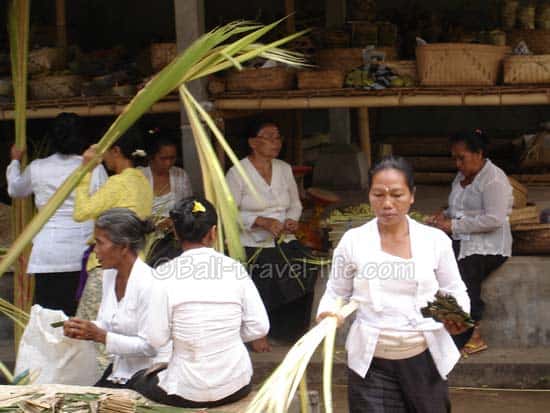
Here you find several pavilions where people prepare offerings and hold meetings. The holiest courtyard (jeroan) is the inner courtyard. This one is located towards the mountains and can be entered through another temple gate.
On both sides of this gateway to the holiest part of the temple, you’ll often find statues of demon figures (raksasa) with middle-aged looking baseball bats.
After the gateway, you’ll run into an aling-aling wall that stops the demons from entering.
In the middle of the holiest courtyard, you’ll find the seat for the priest, which is slightly higher than the other structures around.
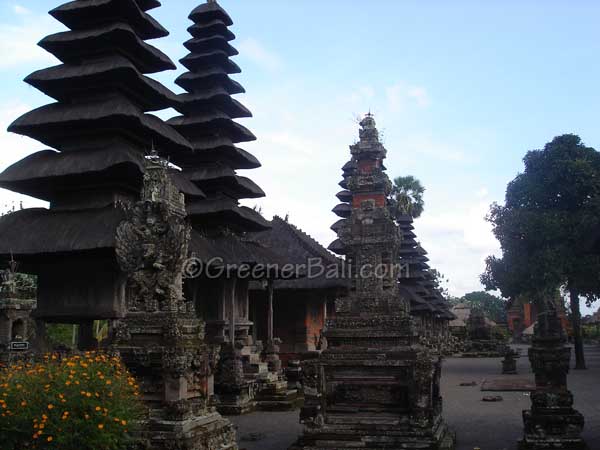
In very important temples there are multi-roofed thatched pagodas, which are called meru. The holiest courtyard also often has shrines and thrones for the gods to use.
When you visit a temple it’s important to follow the temple rules which means you have to wear long pants, a long dress or a sarong with a temple scarf to fasten it around the waist.
At the entrance of the more famous temples, you can often get a sarong and temple scarf. This is also the place where you are asked to pay a small entrance fee or you can make a small donation.

It’s considered inappropriate to walk around those who are worshipping the gods or bringing offerings at the shrines.
It’s always better to sit than to stand during a ritual or ceremony in the temple grounds since the gods and temple priests are always considered higher in rank than anybody.
Women are asked not to enter the temple during their menstruation so are people who have open cuts on their hands or legs. When human bloodstains a small part of the temple the Balinese have to perform a costly cleaning ritual.

